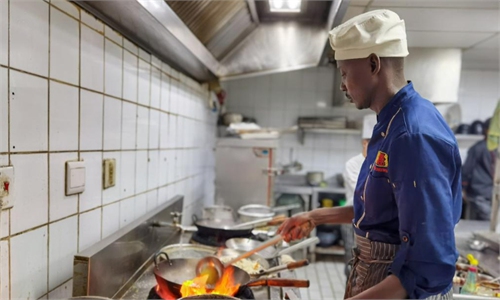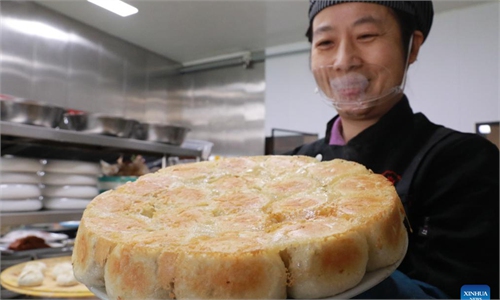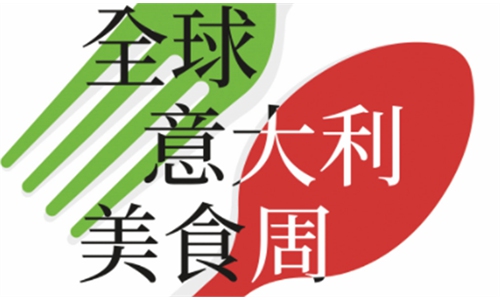ARTS / CULTURE & LEISURE
Exploring versatility and global reach of Chinese steamed buns
Journey beyond borders
The year of 2024 marks the 60th anniversary of the establishment of diplomatic relations between China and France. As a series of cultural exchange activities are held between the two countries, an unexpected Chinese presence, the Chinese steamed buns, known as mantou in Chinese, made an appearance at La Fête du pain, the annual bread festival held in front of the Notre Dame, Paris, from May 7 to May 16.
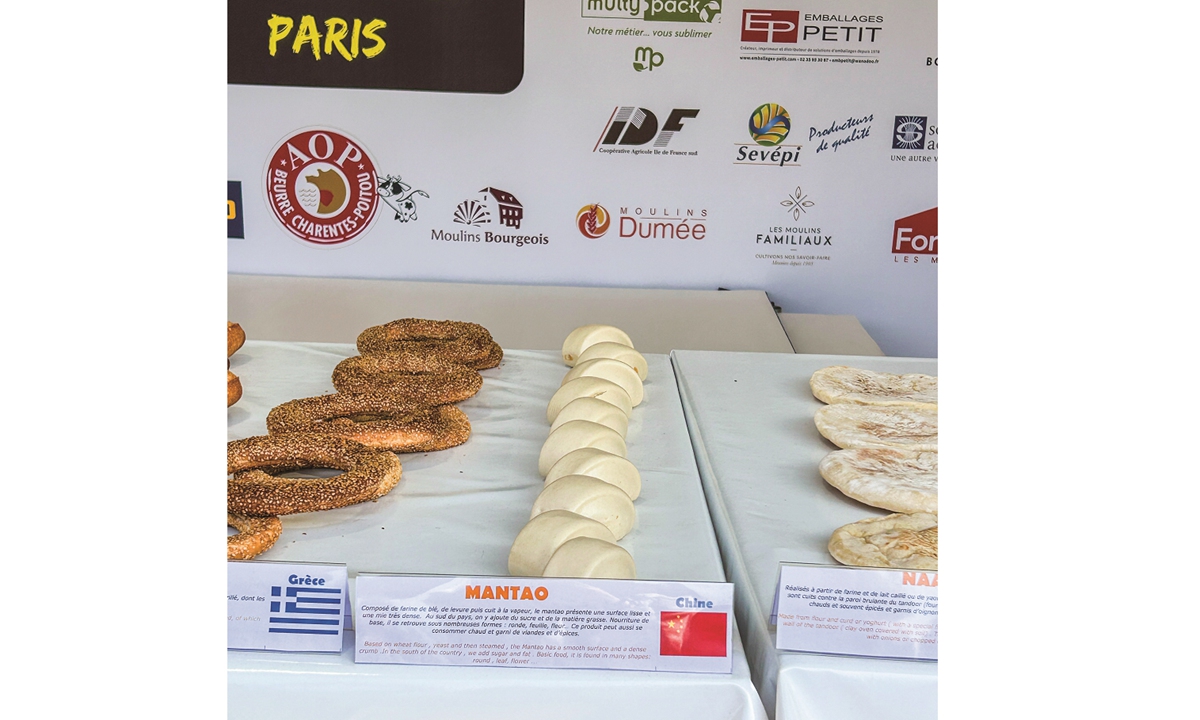
According to the video, the English label called it Mantao [or Mantou], and described it as: "Made with wheat flour, yeast, and then steamed. The mantao [or Mantou] has a smooth surface and a dense crumb. In the southern regions of the country, sugar and fat are added. A staple food, it comes in a variety of shapes, with the most common ones being round, leaf, flower."
Mantou's roots delve deep into China's culinary heritage, spanning millennia and transcending regional boundaries to become an integral part of daily meals nationwide. Its preparation, though simple, yields a versatile canvas for culinary creativity.
Xu, a Chinese student from Central China's Hunan Province, who is studying in Paris, attended the bread festival on May 9. Xu said that she initially thought the event would showcase bread from the Western countries where bread is their staple food. "To my surprise, I saw Chinese mantou displayed as well. I found it very interesting that the French seem to consider mantou as a sort of Chinese bread," Xu said.
"Bread is a staple food in Western countries. Nowadays, China also offers a wide variety of delicious breads. I think the bread festival is also a form of cultural exchange, allowing more people to directly learn about the baking process of various breads from different countries," she told the Global Times, adding that "seeing mantou in the bread festival reminded me of my hometown."
Culinary variety of 'mantou'
The main ingredients for making mantou are simple, including flour, water, and yeast. The production process usually involves mixing flour and water into dough, and then add yeast for fermentation. Finally, the fermented dough is kneaded, shaped, and steamed to produce mantou, which are typically round or oval in shape with a smooth surface and a soft and dense texture.
Mantou can be enjoyed in various ways. When freshly steamed, it is a delight on its own, alternatively, it can be roasted, skewered, and grilled to golden brown, and its flavor can be enhanced with aromatic spices like cumin and chili powder.
Another option is pan-frying mantou. Sliced thinly and cooked with oil in a flat pan until golden brown on both sides, the mantou can be sandwiched between layers of eggs, lettuce, ham, and other fillings for a satisfying meal.
In Central China's Henan Province, mantou can be diced into small pieces and mixed with beaten eggs. After ensuring an even coating of the egg mixture, the mantou pieces are then stir-fried with oil and chopped scallions, serving as both a main dish and a side.
For those pursuing a crispy delight, mantou can also be deep-fried. One method involves frying sliced or cubed mantou directly in hot oil until achieving a golden brown and crispy texture. This crispy mantou can be enjoyed alone or alongside millet congee and pickles for an even more fulfilling experience.
In the northeastern part of China, mantou finds its place atop a simmering pot of tieguodun, absorbing the essence of stewed meats and vegetables to create a flavorful ensemble.
Beyond the traditional soft and white mantou, a variety of flavors and ingredients await discovery, including sweet potato mantou, steamed twisted rolls, and vegetable buns, each a testament to regional taste and preference.
In China, especially in the northern region, it is customary for families to make mantou. One day ahead of the Chinese New Year's Eve, many households steam enough mantou to last for about a week, a practice known as "eating across the year."
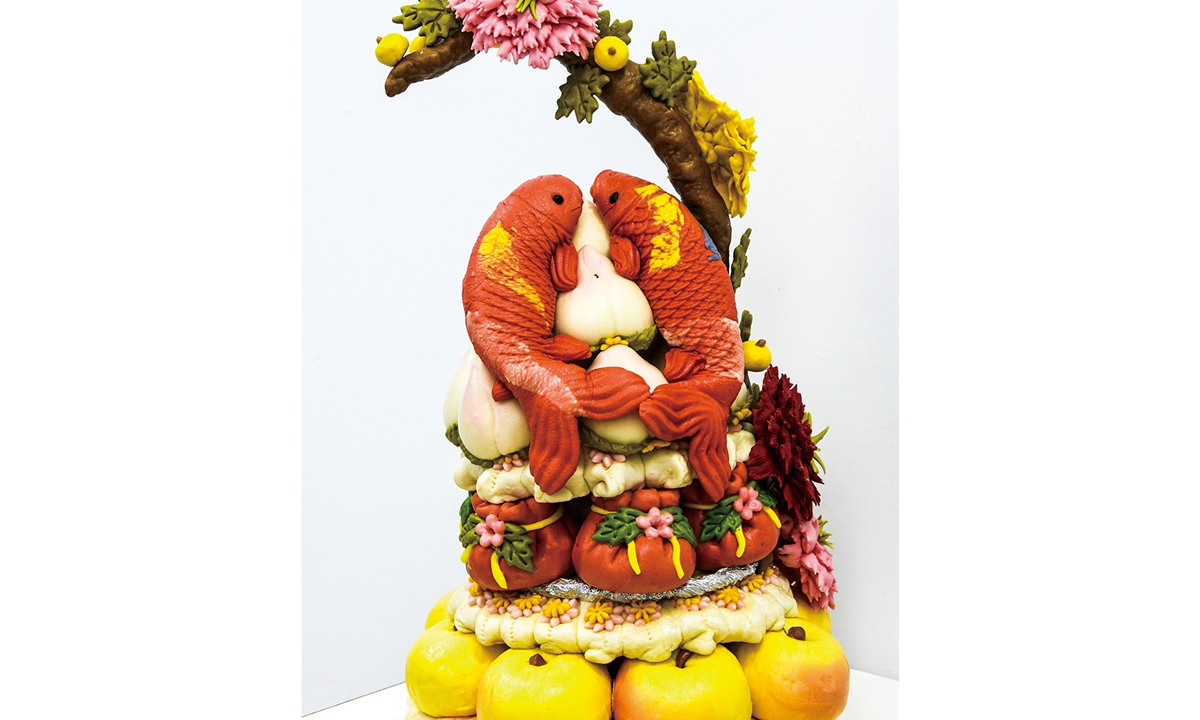
In East China's Shandong Province, mantou has become one of the area's signature dishes, deeply rooted in the local culture. It can be said that the love for mantou is encoded in the genes of Shandong people, as they grow up eating mantou, a food item that often remains a constant companion throughout their lives.
Shandong people not only consume mantou at every meal but also steam various kinds of mantou for important ceremonial occasions. Buns with various patterns, or Jiaodong Huabobo are made from flour, it can be molded into various shapes such as animals, and colorful flowers and trees using simple tools. They are steamed for children's birthdays, students' academic achievements, and elderly's birthdays, weddings, and housewarming parties, making mantou a central element in various celebrations. In 2021, they were included in the intangible cultural heritage list of Shandong Province.
During traditional festivals, local families use the dough to also create symbolic shapes such as carp, lions, dragons, phoenixes, and peaches. After steaming and cooling, these are painted in a variety of colors.
The evolution of mantou from a humble staple to a culinary marvel is a vivid example of China's rich cultural landscape. Across the country, mantou reflects not only diverse flavors but also the enduring spirit of innovation, making it a beloved symbol of Chinese cuisine cherished both at home and abroad.

Chinese mantou are on display at the bread festival in Paris on May 9. Photo: Courtesy of Xu
On May 9, a Chinese netizen who attended the bread festival, posted a video on Douyin, the Chinese version of TikTok. In the video, a line of mantou was nestled among the array of baked food on display. The video quickly went viral on Chinese social media platforms, bringing attention to this most beloved staple food in Chinese diet.According to the video, the English label called it Mantao [or Mantou], and described it as: "Made with wheat flour, yeast, and then steamed. The mantao [or Mantou] has a smooth surface and a dense crumb. In the southern regions of the country, sugar and fat are added. A staple food, it comes in a variety of shapes, with the most common ones being round, leaf, flower."
Mantou's roots delve deep into China's culinary heritage, spanning millennia and transcending regional boundaries to become an integral part of daily meals nationwide. Its preparation, though simple, yields a versatile canvas for culinary creativity.
Xu, a Chinese student from Central China's Hunan Province, who is studying in Paris, attended the bread festival on May 9. Xu said that she initially thought the event would showcase bread from the Western countries where bread is their staple food. "To my surprise, I saw Chinese mantou displayed as well. I found it very interesting that the French seem to consider mantou as a sort of Chinese bread," Xu said.
"Bread is a staple food in Western countries. Nowadays, China also offers a wide variety of delicious breads. I think the bread festival is also a form of cultural exchange, allowing more people to directly learn about the baking process of various breads from different countries," she told the Global Times, adding that "seeing mantou in the bread festival reminded me of my hometown."
Culinary variety of 'mantou'
The main ingredients for making mantou are simple, including flour, water, and yeast. The production process usually involves mixing flour and water into dough, and then add yeast for fermentation. Finally, the fermented dough is kneaded, shaped, and steamed to produce mantou, which are typically round or oval in shape with a smooth surface and a soft and dense texture.
Mantou can be enjoyed in various ways. When freshly steamed, it is a delight on its own, alternatively, it can be roasted, skewered, and grilled to golden brown, and its flavor can be enhanced with aromatic spices like cumin and chili powder.
Another option is pan-frying mantou. Sliced thinly and cooked with oil in a flat pan until golden brown on both sides, the mantou can be sandwiched between layers of eggs, lettuce, ham, and other fillings for a satisfying meal.
In Central China's Henan Province, mantou can be diced into small pieces and mixed with beaten eggs. After ensuring an even coating of the egg mixture, the mantou pieces are then stir-fried with oil and chopped scallions, serving as both a main dish and a side.
For those pursuing a crispy delight, mantou can also be deep-fried. One method involves frying sliced or cubed mantou directly in hot oil until achieving a golden brown and crispy texture. This crispy mantou can be enjoyed alone or alongside millet congee and pickles for an even more fulfilling experience.
In the northeastern part of China, mantou finds its place atop a simmering pot of tieguodun, absorbing the essence of stewed meats and vegetables to create a flavorful ensemble.
Beyond the traditional soft and white mantou, a variety of flavors and ingredients await discovery, including sweet potato mantou, steamed twisted rolls, and vegetable buns, each a testament to regional taste and preference.
In China, especially in the northern region, it is customary for families to make mantou. One day ahead of the Chinese New Year's Eve, many households steam enough mantou to last for about a week, a practice known as "eating across the year."

A Jiaodong Huabobo is shown in Shandong Province right before Chinese New Year. Photo: VCG
Shandong's favoriteIn East China's Shandong Province, mantou has become one of the area's signature dishes, deeply rooted in the local culture. It can be said that the love for mantou is encoded in the genes of Shandong people, as they grow up eating mantou, a food item that often remains a constant companion throughout their lives.
Shandong people not only consume mantou at every meal but also steam various kinds of mantou for important ceremonial occasions. Buns with various patterns, or Jiaodong Huabobo are made from flour, it can be molded into various shapes such as animals, and colorful flowers and trees using simple tools. They are steamed for children's birthdays, students' academic achievements, and elderly's birthdays, weddings, and housewarming parties, making mantou a central element in various celebrations. In 2021, they were included in the intangible cultural heritage list of Shandong Province.
During traditional festivals, local families use the dough to also create symbolic shapes such as carp, lions, dragons, phoenixes, and peaches. After steaming and cooling, these are painted in a variety of colors.
The evolution of mantou from a humble staple to a culinary marvel is a vivid example of China's rich cultural landscape. Across the country, mantou reflects not only diverse flavors but also the enduring spirit of innovation, making it a beloved symbol of Chinese cuisine cherished both at home and abroad.

